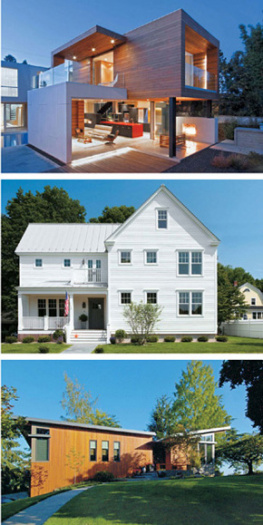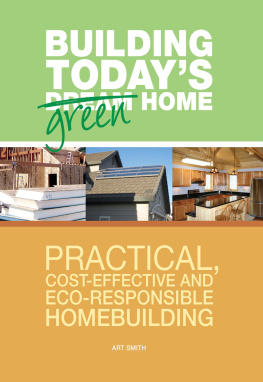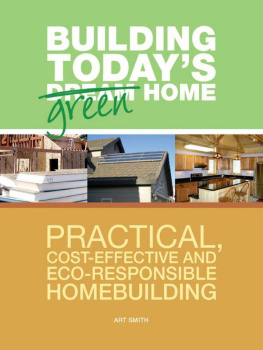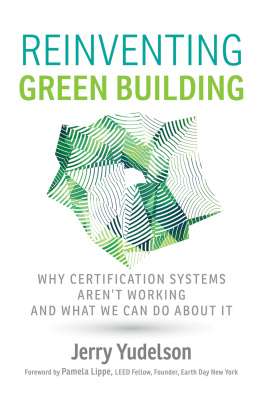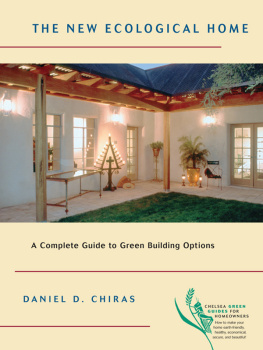An Introduction to Green Homes

An Introduction to Green Homes
by Alan F. Simmons, SRPA, LEED AP
Appraisal Institute 550 West Van Buren Chicago, IL 60607 www.appraisalinstitute.org
The Appraisal Institute advances global standards, methodologies, and practices through the professional development of property economics worldwide.
Readers of this text may be interested in the following publications from the Appraisal Institute:
- The Appraisal of Real Estate, 13th edition
- Appraising the Appraisal: The Art of Appraisal Review, 2nd edition
- Appraising Residential Properties, 4th edition
- The Dictionary of Real Estate Appraisal, 5th edition
- Scope of Work, now available in print or as an audio book
About the Author
Alan F. Simmons, SRPA, LEED AP, CDEI, was a REALTOR for 12 years and an appraiser for more than 30 years. He is now a real estate education specialist working full time in teaching and course development. Mr. Simmons spent most of his life and working career in the state of New York but now lives in Colorado Springs. He has a BA in economics from Union College and has taught in 43 states. Mr. Simmons has taught primarily for appraisal organizations, but he has also instructed for REALTOR and assessor organizations as well as private schools.
Mr. Simmons has been the developer of Appraisal Institute courses on appraisal principles and procedures as well as eight online seminars on topics including residential and commercial green building. He has also developed and taught Appraisal Institute classroom courses on topics such as the Uniform Residential Appraisal Report form, Federal Housing Administration appraisals, appraising condominiums, and residential green building. He has authored various articles and publications.
Mr. Simmons has served in leadership positions in REALTOR and appraisal organizations and received the 1994 Ellwood Award as Appraiser of the Year in the state of New York. He has served the Appraisal Institute as a chapter president and regional representative. Mr. Simmons received the 1992 George L. Schmutz Memorial Award from the Appraisal Institute for contributions to the advancement of appraisal knowledge and best technical writing. He is also a Certified Distance Education Instructor (CDEI) and a LEED Accredited Professional (AP) through the U.S. Green Building Council.
Foreword
Green building is one of the fastest-growing movements in the housing industry today. More than just a passing trend, the green building movement is a response to the pressing environmental problems prevalent in our society and provides tangible environmental, community, and economic benefits, improving health and public spaces and lowering building and energy costs.
An Introduction to Green Homes provides the appraiser with an overview of programs, organizations, and products that relate to environmentally responsible building and remodeling. Green home and product certification programs like LEED and Energy Star are describ-ed, as are popular green home products and features such as energy-efficient appliances, toxin-free flooring and insulation materials, and vegetated roofs. This guide also provides appraisers with an overview of environmental organizations that are leading the way in green building, including the U.S. Green Building Council and NAHB Green, and directs them to a variety of online resources where the most up-to-date information is available. Case studies focusing on various attributes of green homes are provided. The text concludes with a thorough discussion of how green features affect the valuation of homes.
Green homes present new opportunities to residential appraisers. As the presence of green homes increases in the housing market, appraisers who are knowledgeable in all things green can gain an edge on the competition. An Introduction to Green Homes provides a solid foundation for residential appraisers to diversify their practices and become knowledgeable about one of most important forces influencing todays housing market.
Leslie P. Sellers, MAI, SRA
2010 President, Appraisal Institute
Preface
Green building is a hot topic that is being discussed in all segments of society. It is difficult to pick up a newspaper or magazine or turn on the TV without hearing about some topic associated with green building, such as global warming, dwindling water supplies, the ozone layer, the oil crisis, greenhouse gases, carbon cap and trade policies, or renewable energy resources.
Green building programs for residential properties, such as Energy Star, have been around in various forms for the past 15 years. Also, more than 200 local and regional green residential building programs are active, primarily through the National Association of Home Builders (NAHB). Leadership in Energy and Environmental Design (LEED) is a program of the U. S. Green Building Council (USGBC) and the most recognized program in commercial green buildings. In 2008, the USGBC released a new rating program known as LEED for Homes as well as guidelines for the remodeling and renovation of existing residences known as REGREEN. Finally, in 2010 the Council of Multiple Listing Services, the Multi-Regional Multiple Listing Service, the National Association of Realtors, the Appraisal Institute, and other organizations created The Green Multiple Listing Service Tool Kit, which provides guidance for local multiple listing services that wish to implement green initiatives. We will look at the impact and market acceptance of these and other similar programs throughout this book.
This book also provides an introduction to green building practices and a review of how these practices impact value. Various green building products and available government incentives are discussed throughout the text.
Real estate appraisers are finding themselves in a dynamic market right now and are likely just seeing the tip of the iceberg. Green building has the potential to have a huge impact on the housing market and the economy in the coming years. It is no longer just a fad, but has matured into a multibillion-dollar industry. Appraisers need to strive to keep up with the changes.

Introduction
The green building movement is gaining momentum and creating significant changes in the way houses are built as well as the way people live. According to the U.S. Green Building Council, www.usgbc.org, green building has flourished despite the economic downturn of 2008 and 2009, and sales generated by environmentally friendly home building are projected to increase.
Residential green building is geographically dispersed. While some areas have seen little in the way of new residential green construction, this type of construction accounts for close to 25% of the market in areas such as Denver and Seattle.
Appraising any type of building that is different presents challenges. Green buildings incorporate different designs, site planning, building materials, and mechanical systems. Appraisers need to become competent in analyzing and evaluating these new features; this often requires more extensive market research.
Green building is not a flash in the pan; it is here to stay, and the practice enjoys an increasing amount of popular support among a growing number of people who recognize the advantages and support the objectives of sustainable development practices. Green building has extensive governmental support, as evidenced in mandates and financial incentives.


